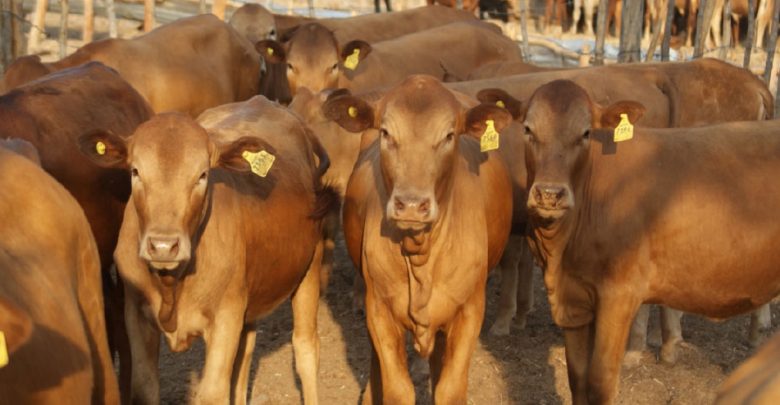No end in sight to Bots-Zim livestock conflict

Seventy-five-year-old Hlanganani Ndlovu of Ward 12 Bulilima West in Matabeleland South has for years grudgingly accepted that living at the border with Botswana will come with its own challenges that even the two countries’ governments have struggled to handle.
While to some, the proximity to the Botswana border is a blessing considering the accessibility of the neighbouring country and the porous border for Hlanganani, it’s rather a curse.
Having been born in a family which had invested more in cattle ranching, today, as he sits at his home, he can’t believe that all his wealth has gone, with only twelve remaining out of a once-thriving herd of 63 cattle that he used to own.
With cattle between the two borders having for years crossed borders, either way, rustlers also took advantage, stealing lots of stray cattle, a move that also influenced the Botswana government in 2006 to introduce the shoot-to-kill policy of stray livestock from Zimbabwe.
Mainly, Botswana argued that the local cattle were spreading the deadly foot and mouth disease (FMD), thereby affecting their beef exports.
Botswana exports about 9,000 tonnes of beef to the EU and 10,000 tonnes to South Africa. It enjoys unlimited preferential market access to the EU, competing with countries such as Brazil.
Unfortunately, Hlanganani was one of the first victims to lose at least twelve cattle through the dreaded shoot to kill exercise, before he lost many more, both through rustling and shooting.
His case is one of the many agonizing stories which mirrors a broader crisis that is being faced by local communities living along the borderlines of Zimbabwe and Botswana.
Sadly, while several engagements between the two countries have happened in the last decade, it seems the problem is here to stay if the present measures are anything to go by.
In one of the many engagements that apparently have done little to control livestock movement between the two countries, just recently, a Botswana delegation was in the country for an engagement over an increase in stock theft and crossing cases.
The delegation was hosted by the Veterinary Department Services together with the Agriculture and Home Affairs ministries.
This came at a time when the Zimbabwe government recently engaged the services of security forces for border surveillance to guard against the illegal crossing of livestock, following reports of a severe strain of FMD In the SADC region.
The new variant of FMD, known as Type O, is said to be more severe and deadly to cattle, with Zimbabwe now on high alert.
“We are activating our surveillance system and our security forces including the army and police are working with their Botswana counterparts in some of our efforts, to try and keep our proud borders guarded for cattle that cross illegally in stock theft or illegal sales, or even cattle that genuinely stray into or outside the country,” chief director of Veterinary services Josphat Nyika was recently quoted as saying.
Botswana has appeared to be the one on the losing end of this whole debacle, as shown by its actions. While the Zimbabwean government managed to convince Botswana to temporarily suspend its shoot to kill policy, its president last year ordered an official inquiry into livestock theft on his country’s border with Zimbabwe. However, the report has not officially been released.
According to government statistics, the affected areas around Plumtree town have over 80 000 cattle owned by local villagers and farmers.
Bulilima West legislator Dingimuzi Phuti in whose area the predicament is rampant confirmed that an inter-ministerial task force is already on the ground in a bid to find ways to deal with the decade long crisis.
“There is a ministerial task force that was recently set up that is led by the Ministry of Agriculture and involves other related ministries. I am however not privy as to how much ground they have covered or how far they have gone so far.
“But what I know is that they have done some meetings, I think there have been some arrangements to involve our own police and the veterinary services and those of Botswana,” said Phuti who is also the Deputy Minister of Information and Communication Technologies, Postal and Courier Services.
One of the traditional leaders, Chief Mandlambudzi, told this publication that there was an urgent need for a long term solution.
“In my area, this problem is more prevalent in the Nswazi area, where elephants have been the ones behind the problem as they destroy the fence dividing Zimbabwe and Botswana in the process allowing cattle from both ends to cross freely. So we have a big crisis. I have had a number of my subjects coming to report losing cattle to the neighbouring country, our appeal to the government is to address the matter or at least erect a solid fence that cannot be easily destroyed,” he said.
Livestock Farmers’ Union (LFU) chairman Sifiso Sibanda said unity of purpose among relevant stakeholders was the solution to dealing with the livestock crisis along the two countries’ borders.
“There are two things here, there is an issue of cattle crossing to Botswana, then they are shot dead, then the issue of stock theft. As for the cattle crossing to Botswana, farmers should simply erect paddocks and maintain them. That’s what we call controlled grazing. That’s the only solution,” Sibanda said.
“No matter how much people talk there cannot be another best solution. Farmers should just come together and buy a fence to ensure their cattle move within monitored areas. As you might be aware we have wild animals such as elephants that also cross and destroy the fence. But once they do that as farmers you can still re-erect that fence to protect cattle movement,” he said.
Sibanda however appealed to law enforcers to up their game in ensuring livestock theft was heavily dealt with.
“When it comes to stock theft we have a big challenge, we appeal to the police to assist on that. It’s unfortunate that sometimes police also become involved as sometimes you will find that cattle may be cleared yet they would have been stolen. Also, police camps should be put closer to farmers so that they can be able to deal with theft cases in time,” he said.
In an interview, national police spokesperson Assistant Commissioner Paul Nyathi said the two countries have since stepped up the fight against stock theft along the border.
“Remember there was a bilateral engagement between Botswana and Zimbabwe which culminated in a ministerial taskforce being set up, so currently there are deployments in the Zimbabwe side and there are deployments from the Botswana side where the two police forces are working together to curb theft from both sides of the border.
“There are also campaigns which are being conducted across the border. There are also some village anti stock theft being set up. So a lot of activities are being done by the two countries to fight cases of stock theft. We also urge villagers to also play their part even on the local side,” Nyathi said.
While others might be happy that finally there was movement between the two countries to address the prolonged problem, for Hlanganani, it is a bittersweet moment.
“We hear they are doing something on the issue of cattle crossing, my wish is that we could be compensated for the dozens that we lost either through the shoot to kill policy or those that just disappeared in the neighbouring country and we never recovered. It’s not me alone but many of us were left paupers as a result,” pleaded Hlanganani.






